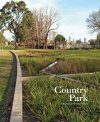![Country Park Country Park]()
Click to have a closer look
About this book
Contents
Customer reviews
Biography
Related titles
About this book
The country park idea originated in the United Kingdom, and its purpose is widely considered to be quite a separate and unique function to parks in general. The purpose of the country park is to protect the natural environment, while at the same time it can provide urban residents in the neighboring townships and cities a place to enjoy the country's beautiful scenery and provide a place for relaxation. Country Park showcases many outstanding country park designs, and delves into the development of country parks, functioning also as a useful reference tool for professional designers, landscape architects and planners. Country Parks includes detailed theory and case studies showcasing outstanding international country park design; analyses and promotes the current status and development of the country park and its role in urban development; and provides valuable guidance for professional designers working in the field today.
Contents
Preface
Chapter 1: The Introduction of Country Park
Chapter 2: The History and Development of Country Parks
2.1 The Original Country Park Concept, 1966-1968
2.2 The Development of the Country Park, 1968-1992
2.3 Country Parks, 1992-1996
2.4 Country Parks,1996-2005
Chapter 3: Characteristics of Country Parks
3.1 Physical Characteristics
3.2 Primary Land Type
3.3 Prior Use
3.4 Location
3.5 Historic Status
3.6 Nature Conservation Status
3.7 Landscape Planning Status
Chapter 4: The Role of the Country Park
4.1 Recreation
4.2 Protection of Vulnerable Land
4.3 Wildlife Conservation
Chapter 5: Design Criteria of Country Park
5.1 Effective Land Area
5.2 Unique and Attractive Natural Landscapes
5.3 Streamlined Landscape Recreation Facilities
5.4 Environmentally-friendly, Energy-saving, and Ecological Materials and Technologies
5.5 Humanized Space Layout
5.6 Safety Protection Systems
5.7 Detailed Management Measures
Chapter 6: The Future of Country Parks
6.1 A Sustainable Future for Country Parks
6.2 Country Parks Today
6.3 Relevance of Country Parks to Our Future
Case Studies:
- Percorso Paesaggistico Culturale
- Jezzine Barracks
- Park Groot Schijn, Zone Boterlaar Silsburg
- Mangfall Park
- Botanical Garden of Faial
- Edmondson Park
- Tagus Linear Park
- Parc Francois Mitterrand
- Le Syndrome de la Page Blanche
- Wijkeroog Park
- Hillarys Boat Harbour
- Elizabeth Hills Estate, Hoxton Park
- Rivermouth Park
- Park in Casalmoro
- Marzahn Recreational Park
- Clifton Hill Railway Park
- Edinburgh Gardens Raingarden
- Strubben Kniphorstbosch
- Mont Evrin Park
- Norges River
- The Meadow Park
- Punggol Promenade
- Ballooerveld
- North Diaoyutai Development
- Leisure Centre of Madine's Lake
Customer Reviews
Biography
Luis Paulo Faria Ribeiro is a professor at the School of Agriculture/University of Lisbon and has twice served as the chairman of the Department of Landscape Architecture (1999-2001; 2004-2006). He is currently the director of the Master's Degree in Landscape Architecture at Instituto Superior de Agronomia (ISA)/Technical University of Lisbon (UTL) and is a member of the scientific board of the doctoral program in Landscape Architecture at LYNK/ISA/UTL. A landscape architect, he is a graduate of ISA/UTL (1993), and has a PhD in Regional Planning from the University of Massachusetts (1997) under the Luso-American Foundation grant. He is a founding partner and an Executive Director of Topiaris Landscape Architecture, a professional consulting firm comprised of landscape architects and planners with an office in Lisbon, Portugal. Under his direction Topiaris has received several national awards, and his work, and the work of Topiaris, has been published nationally and internationally.
























